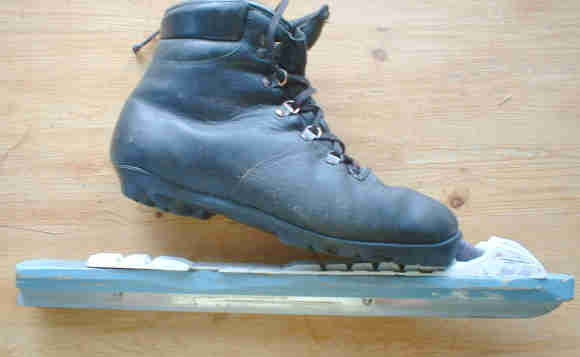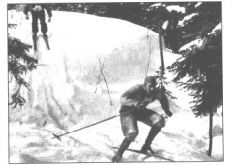Making XC Wax
From: mje@pookie.pass.wayne.edu (Michael J. Edelman)
I’ve been researching this question since it came up a while ago, and the best information I’ve found so far appears in the Sierra CLub’s manual of ski mountaineering- the older editions from the 50s and 60s. Still very good books, BTW; they recommend standard downhill skis and cable bindings for mountaineering 😉
Anyways, the formulas are simple. For dry snow, a mixture of beeswax and silicone waterproofing liquid. The wax provides grip, the silicone provides the necessary hydrophobic characteristics, I imagine.
For grundwax and klister, various proportions of pine tar and shellac flakes, heated together. This is something that should no doubt be done outdoors in a double boiler. You’re looking for a consitency that pulls apart in threads, like good klister. Add more tar for klister, more
shellac for base wax. PIne tar based waxes can also be used for dry snow- my old cake of Jack Rabbit wax smells like a pine tree has been mixed in it.
No doubt the modern experimenter could extend these formulas. You can buy finely powdered teflon at your local gun shop, under the Rmeington brand. This would probably be a good thing to mix with beeswax. And for colder weather, mix some harder waxes with the beeswax- paraffin or carnauba- to cut grip. And powdered aluminum can be mixed with soft waxes or klisters to make wet snow wax. This is used in a number of commercial formulas, including Tomm Murstads, which I have a couple old tubes of.
No doubt all these materials can be combined in other interesting ways; hey, how about a rec.skiing.nordic wax formulating contest?





